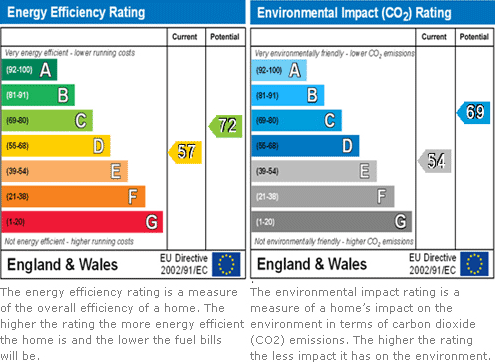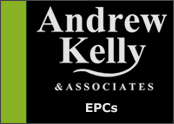Home | Residential Sales | Residential Lettings | Mortgages & Financial Services | Property Auctions | Conveyancing & Legal | Probate | EPCs
Why Do I Need A EPC?
On 14th February 2007, the Government introduced legislation stating that every home placed on the market for sale (with few exceptions) must have a HIP. It was supposed to bring together valuable information at the start of the property sale process such as a sale statement, local searches, evidence of title, title plans and an EPC.
Due to several limitations, the cost, and time delays in marketing a home, HIPs were widely discredited and on the 21st May 2010 HIPs were suspended by the Government. In an attempt to meet European Energy Reduction targets, the Energy Performance Certificate (EPC) element of the HIP was retained.
EPC graph example -

For homes, two ratings are shown.
The energy-efficiency rating is a measure of a home's overall efficiency. The higher the rating, the more energy-efficient the home is, and the lower the fuel bills are likely to be.
The environmental impact rating is a measure of a home's impact on the environment in terms of carbon dioxide (CO2) emissions - the higher the rating, the less impact it has on the environment.
Each rating is based on the performance of the building itself and its services (such as heating and lighting), rather than the domestic appliances within it. This is known as an asset rating. The certificate also lists the potential rating of the building if all the cost-effective measures were installed.
The ratings will vary according to the age, location, size and condition of the building. The potential rating on the certificate will take these factors into account, and the suggested measures will be tailored so that they are realistic for the particular building.
The certificate also includes a recommendation report, providing information about ways to improve the energy performance of the property. Recommendations include cost effective improvements and further improvements (that achieve higher standards but are not necessarily cost effective). For each improvement the level of cost, typical cost savings per year and the performance rating after improvement are listed. The potential rating shown on the certificate is based on all the cost effective recommendations being implemented.

